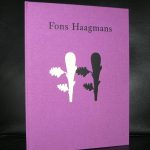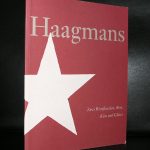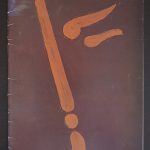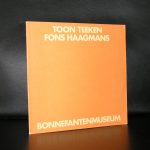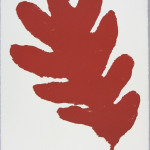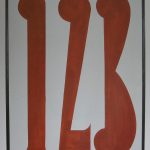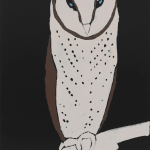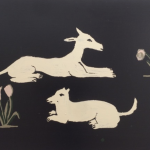
Longtime overdue…this short piece on Gerard Unger does not do justice to the importance of Unger for dutch graphic design.
Unger was a Dutch graphic and type designer. He studied at the Gerrit Rietveld Academie in Amsterdam from 1963–67. A pioneer of digital type and an eyewitness to the important technological shifts of the past five decades, prolific writer and researcher. Unger has taught at the Gerrit Rietveld Academie for over 30 years, and since 1994, he is a visiting professor at the University of Reading at the Department of Typography and Graphic Communication. From 2006 to 2012, he has been lecturer in typography at the Department of Fine Arts of the University of Leiden.
The following text comes from EYEmagazine
Gerard Unger was a quietly ambitious typeface designer whose fonts have achieved a popularity and ubiquity that few superstar designers can equal. Born in The Netherlands in 1942, he has been involved in digital type design since 1974: for print (Dr-Ing Rudolf Hell GmbH, now Linotype Library); for office use (OcZ Nederland, Venlo); and for the screen (Philips Data Systems). Unger studied at the Gerrit Rietveld Academy in Amsterdam from 1963-67 and he has taught there for more than 30 years. Since 1994 he has been a visiting professor of typography and graphic communication at the University of Reading in the UK.
The many typefaces he has designed include Hollander (1983), Flora (1984), Swift (1984-86), Swift 2.0 (1996), Amerigo (1986), Oranda (1986), Argo (1991), Gulliver (1993), Paradox (1998), Coranto (1999) and Vesta (2001), a new sans serif. Many of these are used internationally in newspapers and magazines: for example Coranto for The Scotsman and the Brazilian newspaper Valor, launched in 2000; Gulliver for USA Today and Stuttgarter Zeitung. Swift (see Eye no. 3 vol. 1) has acquired the status of a late twentieth-century classic.
He has also designed several typefaces for signage, including the one used for the Amsterdam Underground and in 1996, in conjunction with the Leiden-based company n|p|k industrial design, a new face for Dutch road signs, commissioned by the Dutch tourist organisation ANWB. He made a personal contribution to the tradition of public lettering in Rome when he was commissioned to developing an orientation and information system for the City of Rome’s Jubilee year 2000. He headed a team of six designers, working again in conjunction with n|p|k. Part of this project was a new type family, Capitolium (1998), to be used in seven languages and in different technologies, including public touch screens.
Unger also designs corporate identities, magazines, newspapers and books, writes regularly about graphic design and typography and lectures abroad. He claims he is proud to remain an ‘old-fashioned designer, satisfying clients, solving problems,’ continuing a Dutch tradition of text face design for reading. ‘Over the past decade,’ he says, ‘while many designers were producing post-structuralist, post-industrial, Deconstructivist designs and … more interested in how things look than in what they have to say, I remained interested in content first.’






